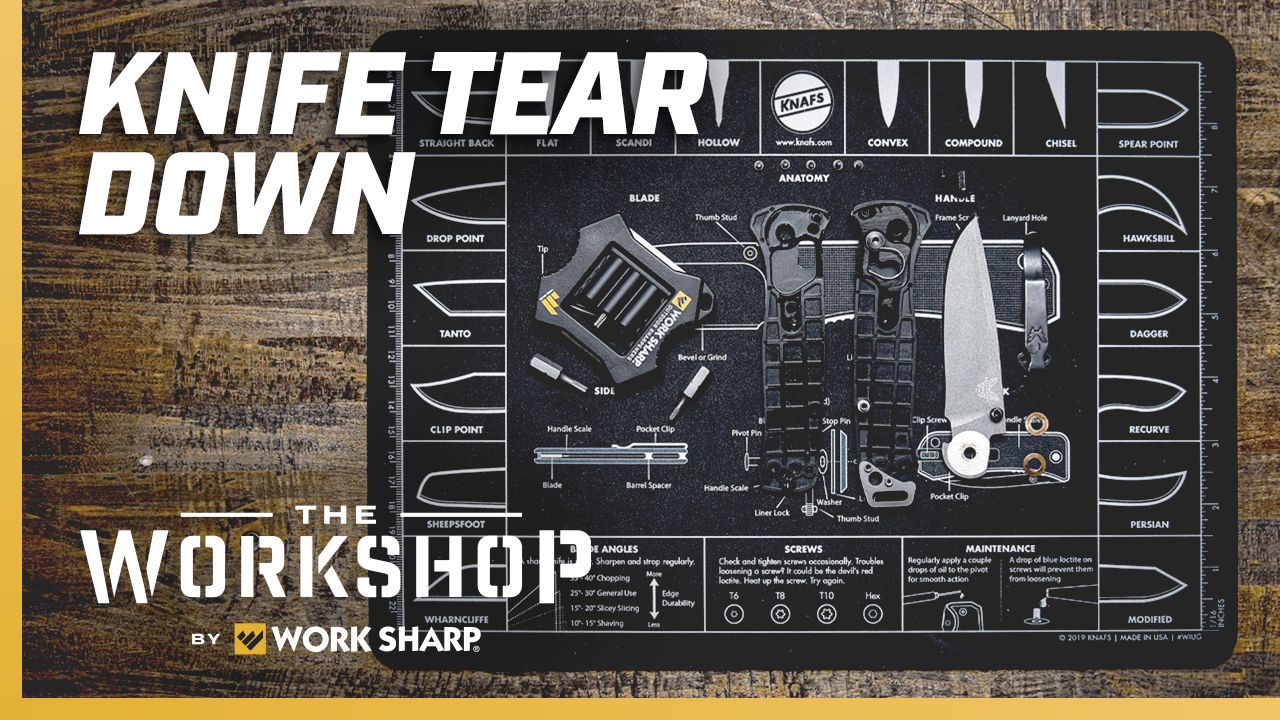How To Clean A Pocket Knife – Knife Teardown And Maintenance
Caring for your knives goes beyond just ensuring their sharpness; it also entails proper maintenance and cleaning. Here, we'll go over some fundamental steps for taking care of your Every Day Carry (EDC) pocket knives.
Please note: Disassembling a knife may potentially void its warranty; make sure to check with the manufacturer before proceeding.
If the disclaimer hasn't deterred you, let's begin. When disassembling a knife, it's essential to have a few tools at your disposal.
- Masking Tape – Ideal for safeguarding yourself from accidental cuts by covering the knife edge.
- Metal Cleaning Solvent – Employed to disintegrate debris during the knife-cleaning process.
- Knife Lube – Applied to the pivot collar and movable components, also effective for lubricating bearings if your knife incorporates them.
- Cotton Swabs/Q-tips – Perfect for cleaning intricate and hard-to-reach areas. (If your knife doesn't require disassembly, using an air compressor or compressed air can suffice for blowing out debris.)
Since each knife varies, we'll skip a step-by-step breakdown. Typically, there are several Torx bolts securing the scales and pocket clip that need removal. Applying masking tape to the blade edge before disassembly is advisable for safety. Once the knife is disassembled, the knife's action can be cleaned. Metal solvent is excellent for cleaning metal bushings and the blade itself. For the inside of the scales, a Q-tip proves effective in reaching grooves and inaccessible areas.
Each knife has its unique disassembly process, so we won't provide a step-by-step guide here. In general, disassembly involves removing several Torx bolts that secure the scales and pocket clip. It's advisable to apply masking tape to the blade edge for protection during disassembly. Once the knife is taken apart, the knife's action can be cleaned. Metal solvent proves effective for cleaning metal bushings and the knife blade. To reach the inner parts of the scales, a Q-tip is useful for navigating grooves and challenging-to-access areas.
In keeping with the Work Sharp tradition, let's not forget about the sharpener. If your knife employs metal bushings, the ceramic plate on our Bench Stone is excellent for smoothing out any burrs that may have formed. Alternatively, any ceramic plate or honing rod can be used to effortlessly address rough areas and refine the knife's action.
After cleaning all the components, you're ready to lubricate the action and reassemble. When putting everything back together, finger-tighten the screws on the scales initially to allow adjustments to the pivot screw. Once satisfied with the action, proceed to tighten the screws, taking care not to overtighten and risking damage to the hardware.

